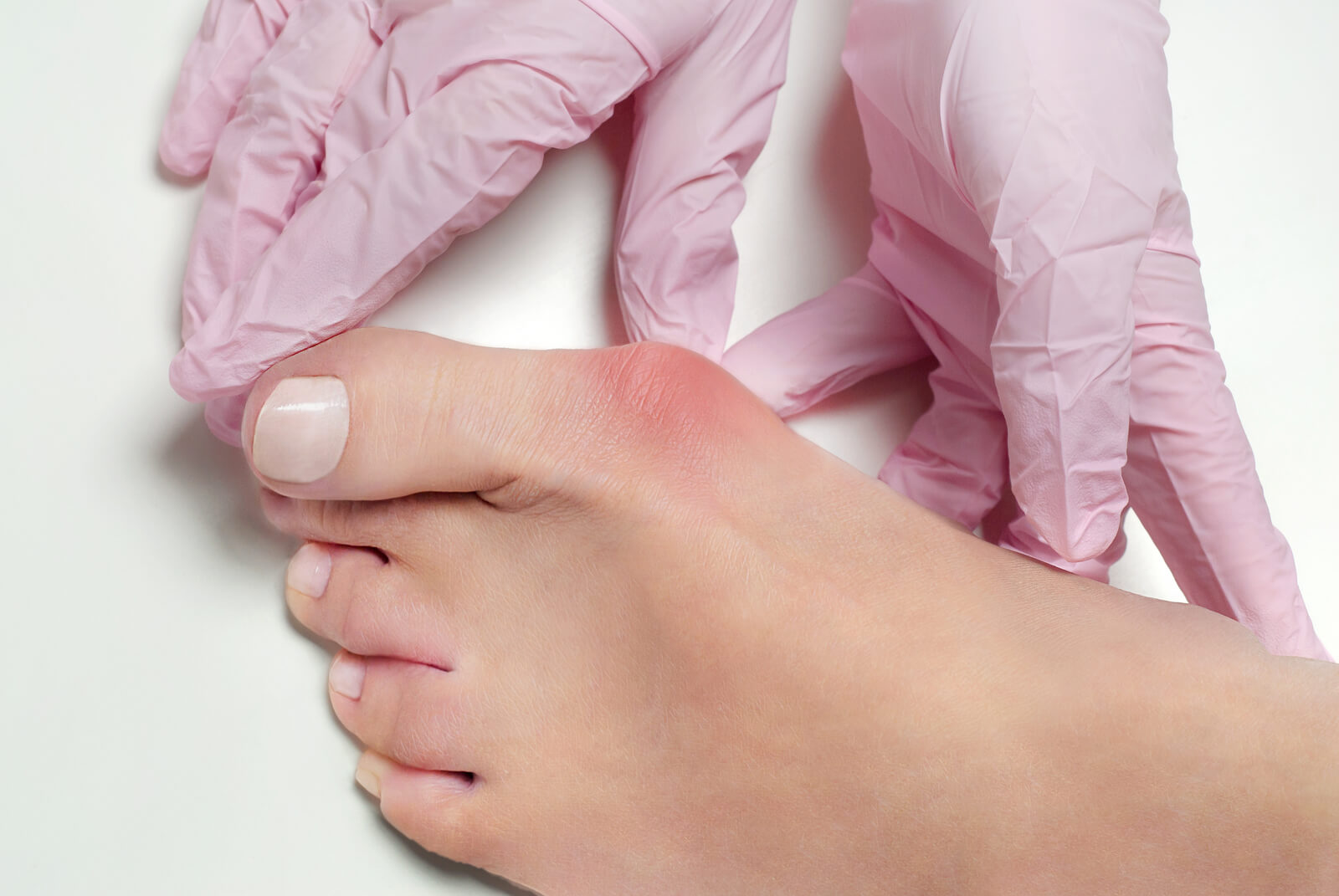Look down at your feet – do you notice your big toe pushing against the next toe? This shift can be caused by many things, forcing the joint of your big toe to get bigger and push out.
The result is a bunion – a painful bony bump that develops on the inside of the foot at the big toe joint. Over time, bunions may progress in size and severity. If left untreated, a bunion may develop into a severe disfigured foot deformity.
What Causes a Bunion?
A bunion is caused by several factors. This could be genetic, structural or congenital. Factors likely to increase your risk include:
• Hereditary: Bunions can run in the family. This may be one of the many problems caused by weak foot structure and develop with arthritis.
• Foot Injuries: Direct trauma or impact to the ligaments on the inside of the foot.
• Structural: Increased length of the first metatarsal bone in the foot.
• Footwear: Poorly fitted shoes (footwear that is too tight, too narrow or too pointed) are more susceptible to bunions. Wearing high heeled shoes regularly also increase the risk of developing bunions. The pressure on the forefoot considerably increases as the heel is raised up.
What are Symptoms of a Bunion?
Depending on the stage and progression, a bunion may or may not cause any symptoms. If you do have symptoms, they may include:
• Swelling or enlargement of the metatarsophalangeal joint at the base of the big toe.
• Displacement of the big toe pushing toward the other toes.
• Joint redness and tenderness.
• Join pain or stiffness.
• Skin irritation over the bunion.
• Persistent or intermittent pain.
• Restricted movement of your big toe if arthritis affects the toe.
When to See a Doctor?
Although bunions often require no medical attention, schedule an appointment with your doctor, a podiatrist or orthopedic foot specialist if you have:
• Persistent big toe or foot pain that interferes with walking or daily activities.
• An overlap between your big toe and your second toe.
• A visible bump on your big toe joint.
• Decreased movement of your big toe or foot.
• Difficulty finding shoes that fit properly because of a bunion.
If these symptoms increase or do not improve after 2 to 3 weeks of home treatment, call your doctor.
How Can I Prevent a Bunion
It is important to understand that not all bunions progress and become worse. Some bunions never change in size or severity. Below are non-surgical measures to mitigate progression of a bunion.
• Choosing the right footwear. Avoid shoes that restrict blood flow. Pointy shoes directly push on the big toe, irritating and limiting movement. High heels alter foot mechanics so limit time and regularity in them.
• Strengthen your foot muscles. It is important to strengthen your foot muscles to counteract the muscular imbalance. You can pick up marbles or a towel with your toes.
• Support your arch. Foot deformities tend to occur in people with flat feet. Look for footwear with arch support to help promote a proper alignment.
Bunion Treatment Beverly Hills
If you suspect that a bunion, seek out professional bunion treatment in Beverly Hills.
Dr. Jamshidinia at Century City Medical Plaza is a board-certified foot surgeon trained in all areas of surgical foot treatments. He is Board Certified by the American Board of Podiatric Surgery and a Fellow of the American College of Foot and Ankle Surgeons. For concerns regarding common foot injuries do not hesitate to contact us today!


